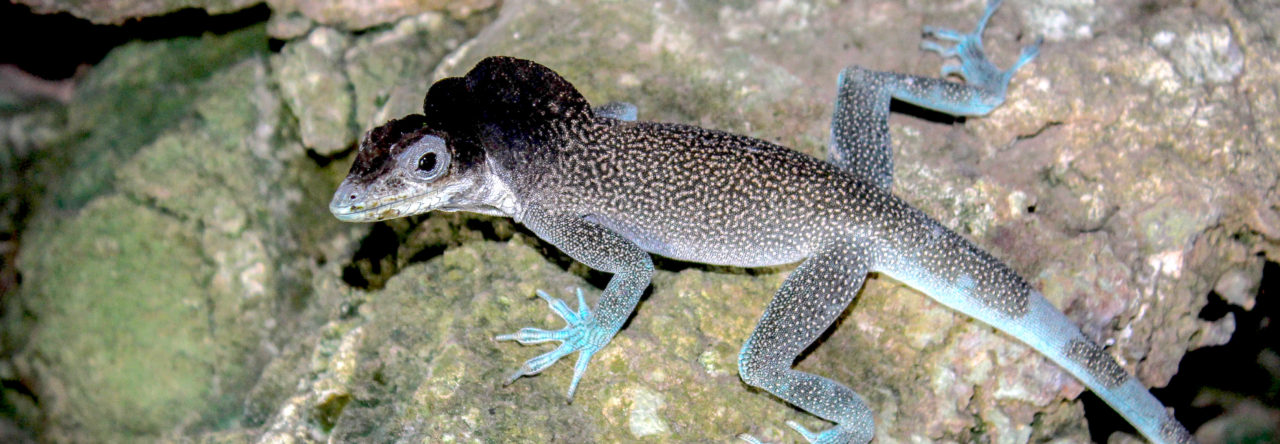
Distribution of sampling localities for individuals included in our breeding experiment. A Male slender anole dewlaps come in two morphs: solid and bicolor (photographs taken by John David Curlis). B Sampling localities in the Canal Zone of central Panama and associated morph frequencies of males in those populations (circle size corresponds to relative sample size from each site). The frequency of solid morph individuals generally declined from the Pacific to the Caribbean versant of Panama. C Sampling localities for individuals included in our Poolseq experiment. All these individuals were collected along a central trail that bisects Soberanía National Park, near the town of Gamboa.
Color us intrigued! In the world of Anolis lizards, the dewlap—a colorful throat fan used for communication—is one of the most iconic features. It’s been flaunted, flashed, and filmed in countless studies of behavior and adaptive radiation. But for all the attention it gets, we still know surprisingly little about how this flashy ornament is inherited at the genetic level.
Enter the slender anole (Anolis apletophallus), a small but charismatic lizard that ups the dewlap drama with a striking polymorphism. Males come in two distinct throat flavors: the “solid” morph, sporting a fully orange dewlap, and the “bicolor” morph, featuring a mostly white dewlap with a splash of orange at the base. What’s behind this variation?
To find out, we set up 99 crosses (yes, 99!) using individuals from populations that were either monomorphic (fixed for one morph) or polymorphic (home to both morphs). The results? A classic Mendelian plot twist. The dewlap polymorphism in this species is likely controlled by a single autosomal locus, with the solid orange morph dominant over the bicolor version. Simpler than we expected—but the story doesn’t end there.

Pooled sequencing revealed a strong candidate locus (single-minded 1, SIM1) that may underly the slender anole dewlap polymorphism. A Manhattan plot illustrating genomic differentiation between the dewlap morphs using pairwise FST values, and B Fisher exact tests. The red lines in B and C represent the Bonferroni correction (p value= 8.9), with points above the line indicating significantly differentiated SNPs across the slender anole genome. C One locus on scaffold 3, the transcription factor SIM1, contained a peak of many highly differentiated SNPs between morphs. The vertical green bars in the inset represent exons and the arrow represents the direction of genome annotation. D Nucleotide diversity (π) of SIM1 for the bicolor (green) and solid (brown) dewlap morphs. Note that nucleotide diversity was often higher in the dominant solid morph. E SNP panel showing segregating alleles in all significant SNPs (n = 175) in the candidate region of SIM1 for each morph plotted as a heatmap. We denote ref/ref in green representing that solid morph individuals were fixed for one allele and alt/alt in purple indicates that bicolor individuals were fixed for an alternative allele. Ref/alt in blue represents more than two alleles segregating at that position for either the solid or bicolor population. F Male slender anole dewlaps come in two morphs: solid and bicolor.
We also dove into the genome using pooled sequencing (Pool-seq) to search for regions associated with the trait. Our outlier analysis spotlighted a single genomic region with a strong signal—and within it, a prime suspect emerged: single-minded 1 (SIM1), a transcription factor with a flair for phenotypic control. Could this be the mastermind behind dewlap color in slender anoles?
The plot thickens, and we’re excited to keep unraveling the genetic threads behind one of the most iconic signals in lizard evolution. Stay tuned!
Link to the paper just published in Heredity.














